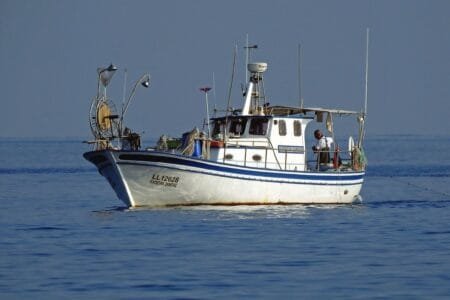The European Commission has announced that it will propose a temporary suspension of animal cloning for food production in the EU. The Commission also plans to suspend temporarily the use of cloned farm animals and the marketing of food from clones. All temporary measures will be reviewed after five years. The establishment of a traceability system for imports of reproductive materials for clones, such as semen and embryos of clones is also envisaged. The system will allow farmers and industry to set up database with the animals that would emerge from these reproductive materials.
Advertisement
What is cloning?
Cloning is the creation of an organism that is an exact genetic copy of another. This means the two organisms share exactly the same DNA.
The word “cloning” nowadays is usually associated with the scientific process, or technique, to artificially create in a lab an organism an animal, for instance using cells from another animal. But it is also essentially what Mother Nature does naturally with twins.
In the world of science, “cloning” was originally used in microbiology and agriculture to describe the process of artificially multiplying organisms to create populations of identical individuals.
How is it done?
It is usually done through a process called somatic cell nuclear transfer (SCNT).
But what does this mean? The cells of mammals are divided into two broad categories the somatic and the reproductive cells. Somatic cells are the cells of an organism’s body. Sperm and egg cells are not somatic cells they are the reproductive cells.
Visually cells resemble microscopic chicken eggs. The chicken egg contains a shell, membranes, albumen and, at its core, the yellow yolk. Cells have their “yolk” also wrapped inside their other components (e.g. cytoplasms, membranes) it is called the nucleus. It’s where the cell stores the information needed to create an organism. This information comes in the form of DNA.
In SCNT, researchers isolate a somatic cell from an organism. Next, they remove its nucleus and place it into an egg cell, effectively replacing the egg cell’s nucleus with that of the somatic cell. The egg cell, with its new nucleus, starts behaving like a freshly fertilized egg. It develops into an embryo, which is then implanted into a surrogate mother who later gives birth to the new organism. This technique was used in 1997 to create Dolly the sheep, known as the first clone to be born.
Is this technique widely used in the EU?
Most Member States have research projects involving the use of the SCNT technique. At present, cloning is not used for commercial purposes in the EU.
Denmark is the only EU Member State which has introduced, via a specific law, a national ban on the use of animal cloning for commercial purposes.
For what purposes is cloning used?
In the EU, cloning is used only in research. In Argentina and the USA, cloning is also used for commercial purposes.
In the US, for example, cloned pigs and cattle are sold to farmers. Australia, Brazil, Canada, New Zealand and Japan are also using the cloning technique, but for research purposes only.
In the future, cloning may be used to “copy” animals, which have shown important traits, like better performance or better adaptation to some environmental conditions.
Even if cloning were to be more widely used than it is today, it would probably be to reproduce high-value, elite animals such as top-quality breeding animals and/or endangered species.
It is important to underline that, for the moment, the process of cloning is still so expensive that clones are not created as food-producing animals, but they are used as breeding animals. Offspring of clones, which are animals conceived naturally or via insemination, may end up in the food chain.
Is cloning already tackled in EU legal texts?
Not specifically. Imports of and trade in animals (both within the EU and with non-EU countries), their semen, ova and embryos are subject to harmonised legislation, regardless of the reproduction techniques that were used to produce the animal. These animals and products, also including clones if this is the case, must comply with the appropriate certified health conditions and be fully traceable. However, there is currently no specific rule concerning semen, embryos or ova from clones.
Directive 98/58/EC on the protection of farm animals applies to cloned, as well as naturally-bred, animals. The Directive forbids the practice of natural or artificial breeding or breeding procedures, which cause, or are likely to cause, suffering or injury to any of the animals concerned.
In addition, the current legislation on novel foods (see question below) defines meat and milk from clones as “novel food.” Therefore, these foodstuffs would need an authorisation in order to be marketed in Europe. Without this pre-market authorisation their marketing is illegal.
Finally, as a research tool, cloned animals fall under Council Directive 89/609/EC on the protection of animals used for experimental and other scientific purposes.
What is EFSA’s role on the issue?
The Commission asked EFSA (European Food Safety Agency) to advise on the following issues relating to the use of cloning: food safety, animal health, animal welfare and environmental implications of live animal clones created through the SCNT technique, their offsprings and the products derived from those animals.
EFSA’s opinion of July 2008 on animal cloning stated that there is no indication that differences exist in terms of food safety between food products from healthy cattle and pig clones and their offspring, compared to those from healthy conventionally-bred animals. However, EFSA also acknowledged the limited data available and the need for further research.
EFSA’s opinion also concluded that the health and welfare of a significant proportion of clones were adversely affected, often severely and with a fatal outcome.
EFSA reviewed its Opinion in July 2009 and again in September 2010. The conclusions are the same as in their Opinion of 2008.
Is the use of cloning limited to food?
The report presented today is looking only at cloning of animals for food-production purposes. Today, cloning is primarily used in research for, among others, therapeutic purposes. It is also being used in agriculture, where the focus is mainly on breeding.
How is cloning linked to the Novel foods Regulation?
“Novel food” is a notion covering foods and food ingredients, which have not been significantly used for human consumption within the European Union since May 1997.
Cloning is a relatively new technique, which allows asexual reproduction of animals. The technique is currently not used for food production purposes in the EU. Therefore, since foods from clones are not obtained by traditional breeding practices they fall under the definition “novel food”.
Why is the Commission adopting this communication now?
This issue has been debated between EU Institutions for several years.
The proposal on Novel foods is now in the final stage of discussions in the Council. The Commission, the European Parliament and the Council have different views on how to tackle this issue.
By presenting the communication on cloning and possible measures now, the Commission hopes to meet some of the concerns expressed from the two other Institutions and find a solution acceptable for all parties.
What are the next steps?
This report will be transmitted to the European Parliament and the Council and at some stage the Commission will submit a proposal in the near future.
Further details : European Food Safety Authority
Source: European Commission







